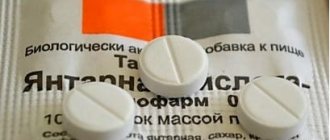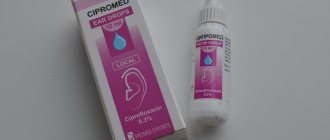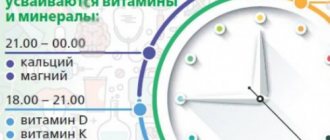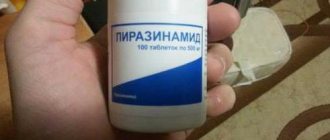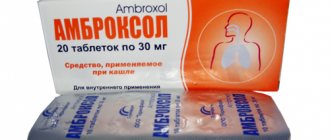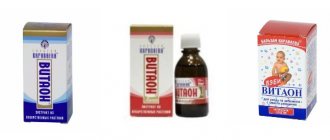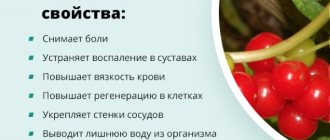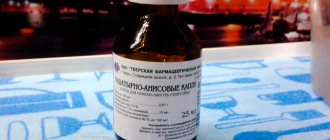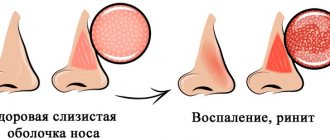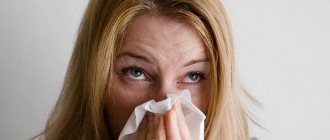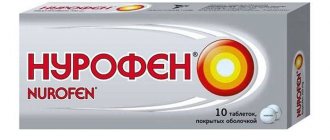Indications for use of Phytolyakki
It has been repeatedly observed that wild pigeons, like other birds that eat the berries of the Phytolyaccus plant, which attracts birds with its bright red color, lose weight by losing fat. This observation led to the use of Phytolacca berry tincture as a remedy for obesity, which gave quite a lot of positive and successful results.
The drug Fitolyakka was developed, which, according to the instructions, is used for the correction of excess body weight, for general or local obesity, for adipose-genital syndrome, expressed in progressive obesity in combination with dysfunction of the gonads and underdevelopment of the genital organs, for cellulite, hypertrophy of some areas subcutaneous fat, with lipomatosis.
According to the instructions, Fitolyakka is also used as a homeopathic remedy for the treatment of syphilis, rheumatism, as an emetic and laxative. But the drug is particularly effective in the treatment of sore throats and mastitis of various etiologies and forms. It is effectively used in the treatment of fibro- and cystoadenomas, subject to long-term use of the drug. Fitolyakka helps relieve pain from cracked nipples.
The use of Fitolyakka, according to the instructions, eliminates hot flashes during menopausal changes.
Fitolyakka is used for headaches accompanied by nausea and heaviness in the head. The drug is effective for morning dizziness and toothache. It is recommended as a remedy for inflammation of the sciatic nerve and numbness of the hands.
Fitolyakka is successfully used to treat eye diseases such as blepharitis (with thickening of the eyelids), lacrimal fistulas, diplopia, pain in the orbits and eyeballs.
The drug is also recommended for the treatment of certain diseases of the respiratory system, including rhinitis with pain in the bridge of the nose, chronic tonsillitis, ozena, dry and sore throat, sore throat, accompanied by ear pain. Fitolyakka is used for acrid nasal discharge, as well as in case of complete nasal congestion.
Phytolacca is recommended for the treatment of joint pain and swelling. Some diseases of the digestive tract can be treated with this homeopathic medicine. Among them: glossitis, gastritis, stomatitis, atonic constipation, diarrhea with colic, hemorrhoids. In addition, Fitolyakka is indicated for orchitis, cystitis, unbearable skin itching accompanied by scratching, warts, keloids, lipomas, calluses, pityriasis and psoriasis.
Side effects and contraindications of Fitolyakka
There are no side effects of Fitolyakka, which means that the patient can safely use this medicine without fear of a threat to the health of the body.
There are no special contraindications for this product. Each body is unique in its own way, so medicine can give completely unpredictable results. For pregnant and breastfeeding women, the use of this drug is completely safe. After using it, there are no side effects, which is why the baby and mother are completely safe.
There are no restrictions when using this drug in children. Mothers can safely give Fitolyakka to children from two years old. It is necessary to place several tablets under the tongue and dissolve them until completely dissolved.
To avoid any abnormalities in the body, when purchasing the drug, you must read the instructions. If you do not understand some of the conditions, you should contact a specialist in the field. You should not take a large dose of the medicine, as this can lead to problems. It is worth noting that only regular and standardized use of the medicine will help cope with this or that disease.
Rely on homeopathy, but don’t forget about doctors
It is difficult for a simple person, who knows practically nothing about practical and homeopathic medicine, to judge the adequacy of the latter. The only thing you should know is that the World Health Organization does not recommend the use of homeopathy in the treatment of serious diseases, such as infectious diseases and cancer. This recommendation is based on the fact that homeopathy as an alternative medicine does not have any evidence base. Vsk drugs, as doctors say, have a placebo effect, nothing more. And if a person under some conditions can use homeopathic remedies and get a positive effect from their use, then serious illnesses cannot be left to the will of a homeopathic healer.
Cost and analogues
In Russia, Fitolyakka is in great demand; purchasing this drug is not at all difficult. On average, one package of medicine costs from 350 to 450 rubles. There are also foreign-made drugs, but their prices are much higher.
Analogs of this product are Angin-Heel (tablets), Angio-Inyel (injections), Bronhalist-Heel (tablets), Viburkol (suppositories), Winzel (spray).
Analogs have similar compositions, characteristics and methods of use.
I. PREMIUMINAL CHARACTERISTICS
The Phytolacca patient has three predominant characteristics:
— exhaustion — pain — changes in the glands and lymph nodes
Thus, in one remedy (type) three types of disorders are combined, which we traditionally classify as sensitive, functional and morphological.
STATE OF EXHAUSTION
The state of exhaustion in the Phytolacca type is very peculiar: the patient complains of a state of significant fatigue, for which he cannot find an explanation, and the origin of which is really difficult to explain, since it occurs for no apparent reason and without a specific schedule. The patient feels constantly tired and depressed both in the morning and in the evening. This fatigue represents true exhaustion. The subject says: “I’m just kind of overworked, I’m not able to think, work, or walk.” And indeed, any action (no matter how small it may be) requires the patient to make an effort that is exorbitant for him. Everything proceeds as if the subject suddenly “ran out of battery” (“the factory ran out”).
But this state of fatigue is accompanied by a whole series of disorders that characterize that fatigue, the true cause of which we are not able to recognize, however, as we observe and study the patient, we can come to determine the true cause of this exhaustion: syphilis, usually hereditary.
The Phytolacca subject should remain in a supine, prostrate position. Why? Because any movement is painful for him. Indeed, all the muscles - neck, limbs, abdomen - are painful. At the slightest touch to them, at the slightest movement, the subject experiences pain. Here one would like to think of the Arnica type, in which the whole body seems painful, as if the subject had been thoroughly beaten. The Arnica subject feels ill in bed because any part of the body on which he lies is painful, he feels as if he were lying on a completely hard bed, without a mattress. In addition, this patient’s head is all hot, and his nose and whole body, except the head, are cold. Finally, let us point out two small objective signs: ecchymoses, easily caused, which have to be distinguished from spontaneous ecchymoses in the Laсhesis type, and small boils or papules with a character inherent specifically and only to this type (remedy): they are located on symmetrical places on the body. If in a subject we find a boil on the right thigh and a second one on the same symmetrical place on the left thigh, we may think of the Arnica type.
The second distinctive feature of depression and exhaustion in the Phytolacca type is trembling: it appears in the patient at the slightest movement.
In two other types similar tremors are found: this is Gelsemium, in which the weakness is so great that as soon as the subject wishes to move, his limbs begin to tremble. For example, when he wants to grasp an object, his hand trembles. But let us remember here that the Gelsemium type also exhibits paresis localized in certain muscle groups. Let us point out two more interesting features of the Gelsemium type: the subject is never thirsty and his pulse is slow.
A subject of the Mercurius solubilis type also exhibits weakness with trembling, but at the same time there is always a simultaneous state of indigestion on the part of the digestive tract, and sticky sweat, which does not bring any relief to the patient. In addition, there is a worsening of complaints towards the night.
The third distinguishing feature of exhaustion in the Phytolacca type is a feeling of immobility and tension in the limbs and all members. Not only is there soreness in the muscles, not only is there general sensitivity when touching them, but the whole subject is tense and has difficulty moving. This stiffness appears again in the Rhus toxicodendron type. In this latter case it becomes easier with movement: only the first movement is painful, then mobility is gradually restored, while in the Phytolacca type the stiffness increases with movement. In the Phytolacca type there is a very interesting modality that allows one to immediately distinguish the Phytolacca type from the Rhus toxicodendron type: while in the Rhus toxicodendron type there is an aggravation of all painful phenomena from dampness and rain, in the Phytolacca type there is improvement from bathing in cold water, a cold shower, and the subject likes it not so much because it soothes his pain, but because it allows him to become tense again from a nervous point of view, since without this he is already very depressed.
It must be added that this change is always accompanied by muscle pain, trembling and tension, as we just described.
If an attempt is made to consider the exhaustion of the Phytolacca type in its entirety, this will lead to the study of two other remedies (types): Kali carbonicum and Psorinum.
Kali carbonicum
: the subject exhibits the same desire to lie down as the Phytolacca subject, the same exhaustion, but not all this constantly. However, the exhaustion is not difficult to explain, since the subject with the Kali carbonicum type is anemic. We know that all subjects treated with potassium salts show a decrease in the number of red blood cells and an increase in leukocytosis. Consequently, we are always talking about anemic individuals, whatever the nature of the observed blood disease. In addition, the subject of the Kali carbonicum type has a peculiar tendency to edema: swelling of the lower extremities (especially the ankle area), and most importantly, swelling of the inner corner of the eye in the upper eyelid. At the same time, the subject of the Kali carbonicum type is weakened for various reasons: when trying to exert brain power he becomes “exhausted” (exhausted), when walking he becomes out of breath, after coitus he becomes depressed. The weakness of the Kali carbonicum type is always accompanied by two other signs that are absent in the Phytolacca type: pain in the lower back (lumbago) and the almost objective sign of sweating with the slightest effort (especially on the forehead and around the mouth, as soon as the subject begins to eat).
Psorinum
: almost the same depletion of strength is detected, but in this case fatigue occurs after a protracted illness or during the period of subsidence of an acute illness, or during the period of recovery from such an acute illness as influenza or whooping cough, i.e. in all these cases we understand and the basis for this coming depression is visible. On the other hand, such a patient loses all his vital warmth: he is chilly, he is always cold, he has a constant need to take cover. He is even afraid of the cold. Further, he falls into despair because his strength does not return for a long time, and he fears for his future. Anxiety, melancholy, despair - all this allows one to think about Psorinum. But there is also an alternation of painful symptoms: for example, after a migraine, he begins to suffer from liver disorders, then, when the liver pain goes away, he develops a rash with severe itching - eczema. Pruriginous rashes appear more in winter than in summer; diarrhea occurs in the morning and at night, and during the period when he suffers from diarrhea, no other disorders are detected in him. Let us add that the Psorinum type always feels best just before the manifestation of any of his diseases - for example, on the eve of a migraine. A similar characteristic is also observed in the Lycopodium subject, in whom a good appetite is always noted just before the hepatic attack. In passing, let us note this small characteristic: when a migraine occurs in a patient of the Psorinum type, this, contrary to what is usually noted, does not affect his appetite. Hunger during a migraine is a very small symptom, but it is characteristic specifically and only of the Psorinum type. Moreover, in the Psorinum type the hunger also occurs at night, as in the Lycopodium type. Night hunger and improvement on the eve of an upcoming new outbreak of suffering (a new pathological manifestation) - these are quite distinct characteristics of the Psorinum type, which make it possible to distinguish it from the Phytolacca type.
PAIN
This patient is all painful, he hurts everywhere: pain in the muscles (muscle pain), in the area of the nerve pathways (neuralgia) and even deeper pain in the bones (bone or periosteal pain).
A. Muscle pain
We have already noted them as the main feature accompanying exhaustion and depression, oppression in this type. How do these pains manifest themselves? The patient says that his “muscles are tired.” At the slightest movement they turn out to be “painful”, and they are painful not only when contracted, but also when lightly touched: the patient is not able to bear the pressure. And this distinguishes it from the Bryonia type suffering from weakness, in which there are pains from the stomach, often manifesting themselves as aerophagia, spasms, vomiting, hiccups, belching of gases and having no apparent cause in any lesion. They are simply functional or sensory disorders due to the nervousness of the subject.
Another remedy (type) characterized by bone pain is Aurum. Aurum type pains are not so acute, but they are persistent, drilling, tearing, deep, as if bones are being drilled or chiseled. The patient himself sometimes says: “It’s like scraping bones.” This pain is much more pronounced at night, as well as in winter. An Aurum subject always suffers more in winter than in summer. Localization of pain - head bones; they are accompanied by a feeling of congestion of the head, face, and real hot flashes. The same pain can occur in the bones of the limbs. Both in the Phytolacca type and in the Aurum type there is improvement from wrapping the painful limbs in a sweater, woolen cloth or a special blanket. What makes it possible to make a differential diagnosis between the Phytolacca and Aurum types? The first of these is characterized by some cardiac disturbances, but the second (Aurum) is characterized by palpitations, very pronounced at night - it simply comes down to real cardiac erethism. We will now see special signs that will allow us to determine the Phytolacca type in certain heart diseases. In addition, in an Aurum subject, the legs are swollen, the varicose veins are quite prominent, and there is a feeling of heaviness in the lower extremities, as if they weighed 20 kilograms each.
When we see a patient whose legs are swollen and who complains of a feeling of heaviness in them, palpitations (sudden, sharp, worse at night), with attacks of heat, and sometimes with outbursts of anger, we can think about the Aurum type if bone pain and periostitis affect short bones. Bone pains affecting the long bones correspond to another remedy, which we will now study - Acidum fluoricum. But with this type, bone deformations usually occur. When palpating the long bones (especially the tibia), real depressions are noted in them, and saber-shaped shins are quite characteristic of Acidum fluoricum, especially if the subject has superficially located varicose veins. But these are not the deep varicose veins that are typical for Aurum.
Superficially located varicose veins of the Acidum fluoricum type exist not only in the area of the legs, but also in the area of the thighs and even on the chest. Such a patient is almost “designated” from an objective point of view. When it is examined carefully, all the signs of a fluoride component are recognized in it (see L. Vannier “Typology”). But in contrast to the Aurum subject, he is aggravated by heat and ameliorated by cold. Let us add to this that the subject of the Acidum fluoricum type suffers from increased itching whenever he has an ulcerated fistula, wound or varicose ulcer. The last remedy (type) to think of when we encounter bone pain at night is Syphilinum. Pains in this type are nocturnal, they are not localized in one point, like pain in the Kali bichromicum type. Pains of the Kali bichromicum type can sometimes be confused with pains of the Phytolacca type; these are wandering pains, appearing and disappearing suddenly, but they do not spread along one line, do not follow one path: they occupy only one point. In the Materia Medica they usually say that this point can be covered with the tip of the finger. This again reveals the same symptom that is inherent in pain in the Ignatia type. Indeed, in both of these types (Ignatia and Kali bichromicum) there are painful points, but in the latter of these types there is always a deep intoxication or even a painful change, while in the Ignatia type the neuralgia depends entirely on purely nervous reactions: more or less increased sensitivity, troubles or upsets. And in a patient of the Kali bichromicum type, one should always look for the presence of painful changes in the mucous membranes. Here we find a peculiar secretion - viscous, sticky, yellowish or greenish, or ulcerations with uneven edges and a painful bottom. Such changes indicate Kali bichromicum.
B. Bone and periosteal pain
These pains are sharp and burning, like fire. The feeling of burning pain, as from a red-hot fire - this comparison is given in all Materia Medica. It corresponds to the pain noted in the Arsenicum album type, but the burning sensation in the Arsenicum album type is relieved by hot applications. Another remedy corresponds to burning bone pain: this is Mezereum. But these pains are noted mainly in the bones of the face. These are neuralgia so strong that the patient cannot even wash his face. A small amount of cold water falling on the patient's face intensifies this pain, and the patient suffers from it at night even more than during the day.
Bone pains are sharp and burning, like fire, like Phytolacca, forcing the patient to move, get out of bed, because it is at night that these pains strike him the most. And he finds himself forced to move without receiving any relief from it, like a subject of the Rhus toxicodendron type at the beginning of movement. There is, however, some analogy between these two means. The pains of the Phytolacca type are always worse in damp weather, but they are also worse at night, like the pains of the Mercurius, Aurum, Acidum fluoricum and Syphilinum types. On the contrary, they are “relieved by warmth”: this is why the patient feels the need to wrap himself in woolen fabrics, a sweater or other covering for the limbs (legs or shoulders), covering first of all the sore members. An important characteristic: the patient’s bones or periosteum hurt more at night. Thus, those pains that are clinically called bone pain correspond exactly to pains of the Phytolacca type. Many remedies can relieve bone pain: the first among them is Asa foetida, but with this type of pain they have a certain localization: in the area of the nose, mastoid process, tibia. These pains are always more pronounced at night. They are accompanied by two small phenomena that make it possible to draw attention to this remedy (type): on the one hand, extreme sensitivity to the slightest touch, on the other, slight spasmodic pains follow the course of the nerve trunks along the entire length of each of them. These are not only bone pains, but also nerve pains, and more or less deep; finally, they are persistent. The patient suffers so much at night (in contrast to how he feels during the day) that from the very beginning of the evening until dusk he experiences a real fear of the dark, or rather, the fear of the approach of night with its pain.
Another small characteristic of Phytolacca type pain is that it is localized in the heels. These pains are constant and even old. The patient receives relief only when he can stretch out on a couch or bed, raising his legs above his body so that, looking at the position he chooses, you begin to think that the patient has varicose veins. But he doesn’t have them at all, there’s just a characteristic modality of pain in the heels of the Phytolacca type. Three other types are characterized by heel pain.
Acidum oxalicum
- pain is localized at certain points, there is stabbing, and oxalic acid is found in the urine.
Аranea diadema
- the patient always feels worse in damp weather. This is a subject of the hydrogenoid state. Pain appears after a long stay in damp places, in a newly built house. The patient freezes completely and experiences a feeling of icy coldness in the bones. The Silicea subject is very chilly, but the Aranea diadema subject experiences a peculiar sensation of being completely frozen. An important characteristic: the patient feels as if his hands are heavy and swollen. It is especially pronounced in the morning, so that when the patient wants to get up, he finds it very difficult to raise his arms.
Lycopodium
- the patient has a feeling of a sharp stone in the shoe, piercing the heel and causing suffering. The pain is always sharp, and when the patient happens to walk on uneven ground, his suffering is still intensified, while the pain of the Phytolacca type persists equally both when walking and at rest. Let us remember that the only position that can soothe pain in a subject of the Phytolacca type is the position with the feet raised up and the head down.
For the sake of memory, let us add that there is also sensitivity in the heels, but much less pronounced than in the cases of those remedies (types) that we have just studied: this belongs to the Medorrhinum type - the subject is barely able to walk, but in a strange way, it is enough for him to be on the seashore, how he feels significant relief, and is even able to walk as he pleases, in sandals or boots.
CHANGES IN GLANDS AND LYMPH NODES
These changes can occur in two completely different places: a) in the lymphatic tissue (adenopathy); b) in glandular (epithelial) tissue (tumor formations).
Ganglionic adenopathy can exist independently, and then it turns out to be akin to Trousseau's adenopathy, in which the main remedy is Silicea. But the Silicea patient is thin and demineralized, while the Phytolacca patient may be large and corpulent, and Phytolacca even appears among the anti-obesity remedies.
On the other hand, ganglionic adenopathy of the Phytolacca type can be combined with inflammatory conditions such as sore throat, ulceration, and boils. But it is not for ganglionic adenopathy of this order that I urge the doctor to prescribe Phytolacca - they turn to him about the symptoms of the suffering that caused the appearance of this adenopathy.
Tumor formations - the mammary glands are mainly affected. Phytolacca can be given in the presence of acute or chronic lesions.
Let's start with an analysis of acute breast diseases.
1. Acute mastitis. Let's clarify the indications for choosing Phytolacca. The mammary gland is tense and painful. Its rough characteristic is woody hardness - that’s why they always talk about “wooden breasts”. And it is curious that such hardening can be combined with the threat of suppuration. At first glance, this seems paradoxical, because suppuration is usually announced by the appearance of fluctuations, not hardening. If we are talking about a nursing woman, with hardened breasts and the threat of suppuration, then at the moments of feeding she suffers from pain radiating from the nipple throughout the body. This is an interesting fact, since with another remedy (type), Croton tiglium, the pain spreads from the nipple to the back, it pierces through, and with the Pulsatilla and Silicea types, the pain caused by sucking radiates to the uterus. These are significant differences that, if detected, allow the doctor’s thought to be directed towards one or another remedy.
2. Breast abscess. What is the role of Phytolacca here? About the same as the role of Hepar sulfur. It is useful when they want to speed up suppuration in order to help the patient quickly reach the completion of the disease process. Still, you should remember those symptoms that allow you to distinguish Phytolacca from the Hepar sulfur type: a patient of the Phytolacca type has a feeling of increased sensitivity of all her muscles, while with Hepar sulfur there is increased sensitivity only in the area of the inflamed area; in addition, in this case there are always cracks and fissures on the nipple itself, and the gland itself is as hard as wood.
In case of chronic diseases of the mammary gland, one should first of all keep in mind the possibility of the development of one or another tumor process. The process which seems most characteristic of the use of Phytolacca is one which we usually find in a woman with chronic mastitis. Such breasts are all filled with nodular hardenings. Pain at the slightest touch. The patient also suffers during menstruation.
In the Natrum muriaticum type the breasts feel thin and nodular, as in the Iodium type, but there is no pain. A tumor of the mammary gland as a result of a blow or other trauma to the gland requires treatment with Conium.
We again see indications for the use of Phytolacca in breast cancer. The tumor appears bluish in color, almost violet, and with very noticeable enlargement of the axillary lymph nodes. Next, a small phenomenon unique to the Phytolacca type: irradiation of pain from the mammary gland throughout the body. The gland always looks hard and has cracked nipples. In the treatment of breast cancer, Nash recommends giving Phytolacca in dilutions of 200 and 1000, moreover, during periods of waning of the moon, and giving one dose every 3 weeks. And around the same era, Cooper from London recommended giving 2-3 drops of undiluted Phytolacca tincture, also once every 3 weeks. It is curious that two different authors obtain the desired result with the same remedy, one of them giving this remedy in high dilutions during periods of waning moon, and the other in the form of frequent tinctures, once every three weeks. The impression is as if the tincture is dynamized in the body by the play of blood flow.
Are there objective
signs of Phytolacca? Yes, two main ones:
- pain when percussing the tibia - an irresistible need to clench the teeth.
We meet again with this irresistible need to clench the jaws in the Mercurius corrosivus type, but while the Phytolacca patient clenches his teeth when falling asleep, while reading or writing, the Mercurius corrosivus type clenches his teeth only at one single moment - when, as a result of gingivitis, it feels as if the teeth have become too long. And then he presses forcefully on the painful tooth, which, however, causes him significant pain. In the case of Phytolacca, we are more likely talking about spastic contracture, since the subject’s teeth do not hurt. For completeness, I will point out a small remedy (type), which sometimes also turns out to be associated with clenching of the jaws - Podophyllum. For example, we are talking about a baby who is teething, he clenches his jaws, pressing one strongly against the other, and it is necessary to apply considerable force in order to examine his mouth. In addition, such a child (usually 2–3 years old) always has morning diarrhea, consisting of yellowish, splattered masses. This symptom is accompanied by pain in the liver area with improvement from rubbing the area of the right hypochondrium with hands. All this makes it easy to diagnose the Podophyllum type.
Plants, stones and more
The main components of homeopathy are natural substances: various parts of plants, minerals, chemical compounds, ash. But since homeopathy believes that getting rid of a disease should be done with a substance that can cause it, this branch of alternative medicine uses components taken from infected tissues and organs. Each such substance in homeopathy has its own name. One of the components is phytolacca. Instructions for use of this substance indicate its origin and scientific name - American Lakonos.
Price
Prices for the drug may vary slightly depending on the region and region of sale of the drug, as well as based on the dosage form sold. You can find out the exact cost of the product at any pharmacy located near your place of residence.
| Region/area | Dosage form/concentration | Price |
| Moscow, Moscow region | Granules (C6), 10 g | 191-232 rub. |
| Saint Petersburg | Granules (D6), 10 g | 125-175 rub. |
| St. Petersburg (suburbs) | Granules (C100), 5 g | 171-219 rub. |
| Novgorod region | Granules (D12), 5 g | 81-109 rub. |
| Leningrad region | Granules (D6), 5 g | 54-68 rub. |
Before using Fitolyakka, you must consult with a homeopathy specialist and carefully read the indications indicated in the instructions. Additionally, it is recommended to study reviews of patients who took the drug in the treatment of various diseases.
Instructions for use, dosage
Fitolyakka is a homeopathy (indications for use of the drug are identical for all dosage forms), which is intended for oral administration.
The dosage and other features of the use of granules are determined according to the age of the patient, as well as the dilution concentration taken.
For children
Children in the form of granules are prescribed 8 granules 3 to 4 times a day. In this case, all granules must be kept in the mouth under the tongue until they are completely dissolved. Take the drug half an hour to an hour before or after meals. The duration of therapy is 1 month. Repeated use of the drug is possible after a break of 1 month.
The product in the form of a tincture for external or oral use is used according to the established disease and only with the permission of the treating specialist.
For adults
The dosage for adults is 8 pcs. granules no more than 4 times a day. The capsules are taken orally, placed under the tongue. The duration of treatment is no more than 1 month. Repeated courses are allowed only after preliminary consultation with the treating homeopath.
The break between courses should be at least 1 month.
The dosage of the drug in the form of an infusion should be taken as prescribed by a specialist and only after the established form of the disease. In this case, the treatment regimen is developed only by a homeopathy doctor.
Storage conditions and periods
Fitolyakka is sold in pharmacies without a doctor's prescription. In order to preserve the properties of the medicine, you need to store it in a dark, dry and cool place. Protecting the product from light will help maintain its quality.
A prerequisite is that Fitolyakki is not accessible to children. And although this medicine will not cause any special problems for the baby, it is better to avoid possible problems.
The purchased drug can only be used for five years. After this period has passed, the medicine will pose some danger, from which it is better to protect your body.
Contraindications
The drug has some restrictions on use related to the patient’s condition or the effect of the active substances.
Contraindications:
- allergy to the composition of the product due to hypersensitivity to the components;
- low body weight (dystrophy);
- intolerance to one of the components.
Before taking granules, it is recommended to undergo additional examinations to confirm or exclude the presence of restrictions.
To avoid the development of allergic reactions, it is recommended to use the granules once and observe the reaction. If any negative symptoms occur, it is recommended to stop taking the drug further.
special instructions
The homeopathic drug Fitolyakka has several dosage forms. This or that type of product is selected by the treating specialist according to the indications and ease of use.
When taking the drug, a temporary exacerbation of symptoms that were observed before the prescription of the granules/tincture is possible. If such signs occur, you need to take a break for 5-7 days.
If negative manifestations persist for a long time, as well as in the absence of therapeutic effectiveness, it is necessary to discontinue use of the product and contact your homeopath for advice.
Granules can be used while bearing or feeding a child. However, treatment during this period of time should only be carried out with the permission of a specialist. The components of the product are not able to pass into breast milk, so there is no need to stop breastfeeding during therapy.
The drug does not have a depressing effect on the psyche and visual functions of a person, and therefore it is allowed to drive a vehicle or carry out other work that requires high psychomotor functions.
Release forms and composition of the drug
This drug is produced by a Russian company in the form of granules or drops for oral use, as well as in the form of a tincture for external use.
The active component of the product is American Laconia extract.
Additional composition:
- phytolacca D12;
- phytolacca D30;
- graphite D12;
- graphite D6;
- graphite D30;
- sugar granules.
The drug is contained in a dark glass bottle and packaged in a cardboard container.
Patient reviews of the drug Fitolyakka
- “I took classes for pregnant women. It was there that we were told about the effective remedy Fitolyakka. At first I didn’t really believe that it was actually good. But when I personally used it, everything changed. As someone who has personally experienced the drug, I recommend it to others.”
- “He who believes helps him. You won't be able to achieve an immediate effect. To achieve the desired result, you need to systematically take the medicine in accordance with the instructions. One of the advantages is that the medicine is relatively inexpensive. Disadvantages - the drug does not provide an immediate effect. To achieve positive results, long-term treatment is necessary, especially for chronic diseases.”
- “Fitolyakka worked great for me. It's not expensive and works great. This is not the first year that in the fall, when it rains heavily, I have started getting rheumatism. But once you use the remedy, after a few days the aching pain begins to go away. I have never seen such quick results. That’s why I’m using the product now and I advise others to try it.”
Each organism is an individual system, consisting of certain mechanisms and processes. In this case, it is impossible to predict what might happen if Fitolyakka is used incorrectly.
Pain cannot be tolerated, citing the fact that the moment will come and it will go away on its own. It is important to understand the complexity of the consequences, which can lead to serious problems in the body. Phytolyacca homeopathy is an excellent remedy that can improve a person’s immunity and solve his problems. Correct treatment will give a quick progressive result, relieving the patient of many significant problems. Life will seem better, and there will be more opportunities to realize yourself.
